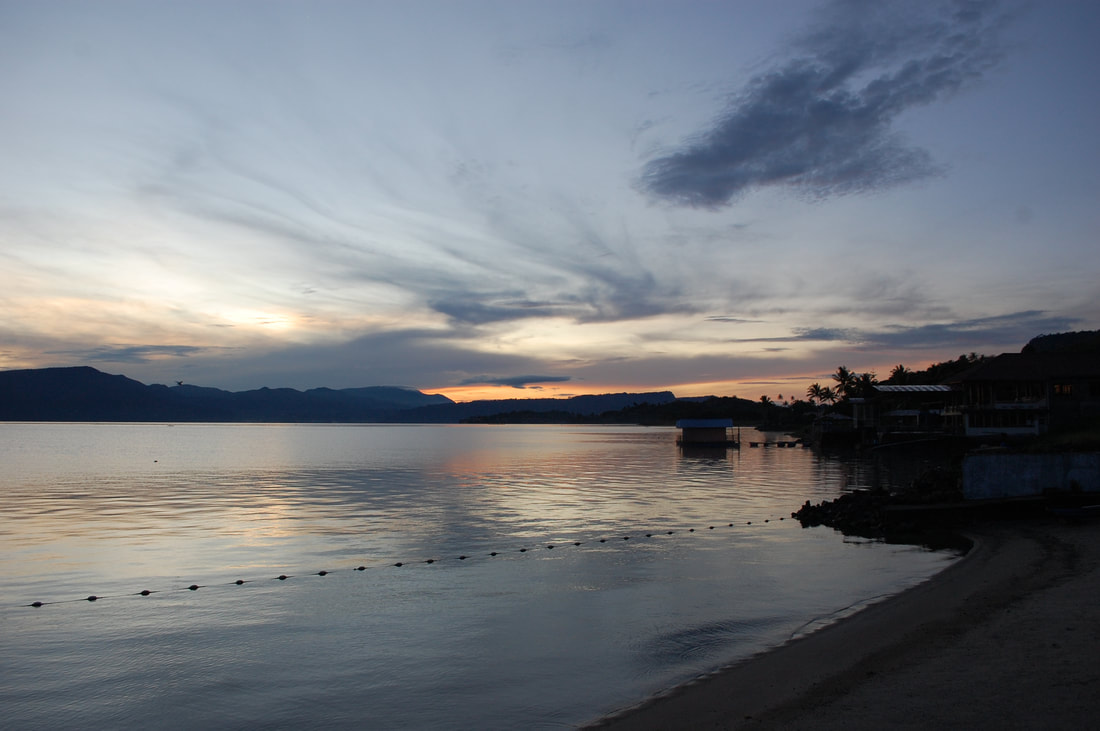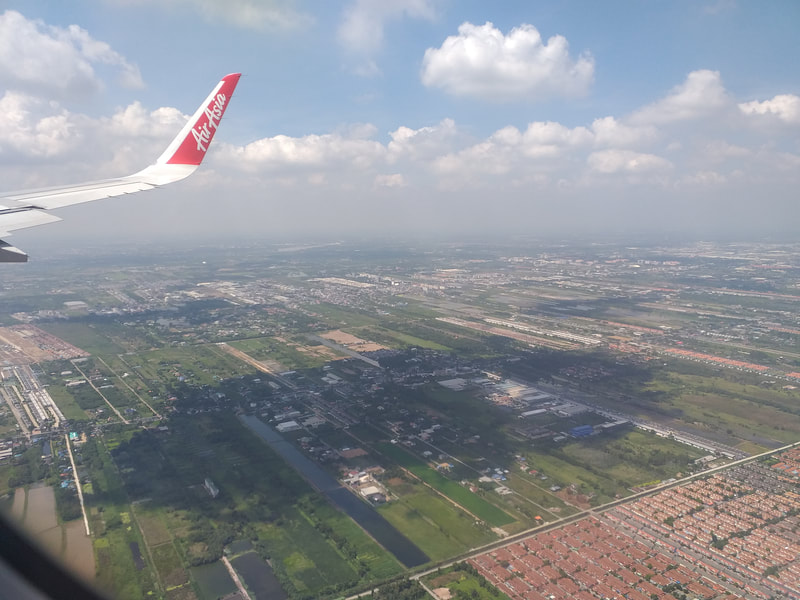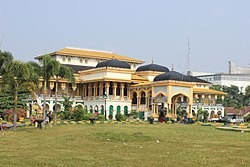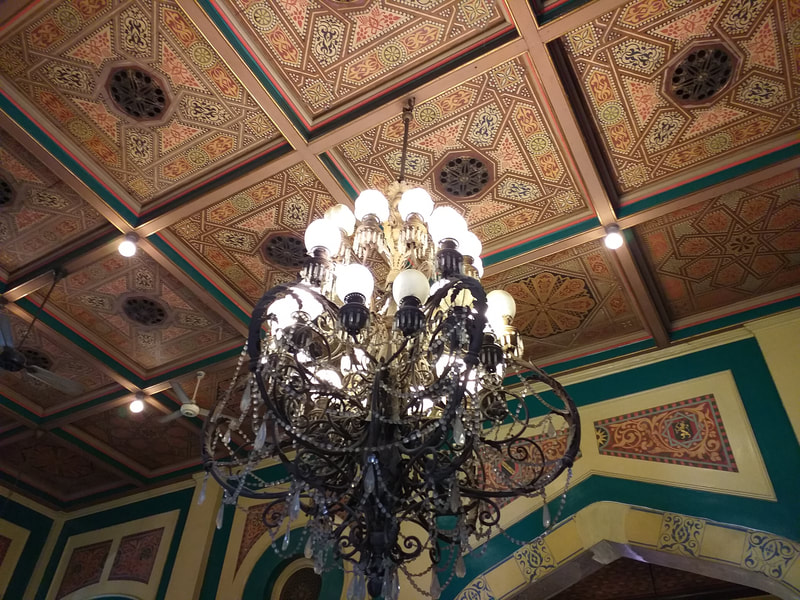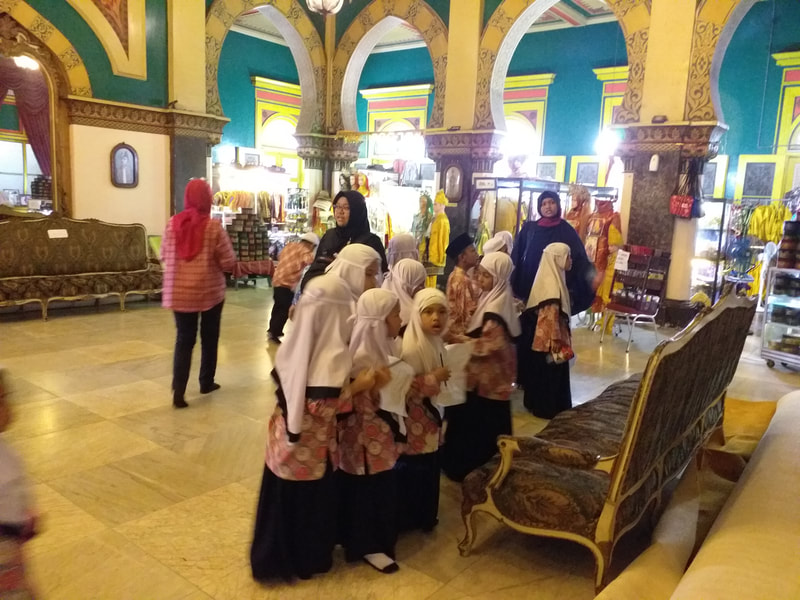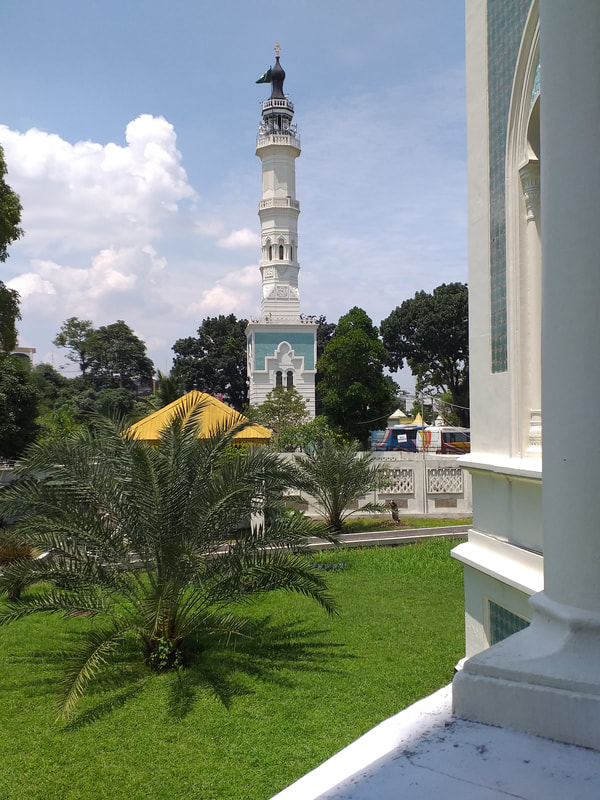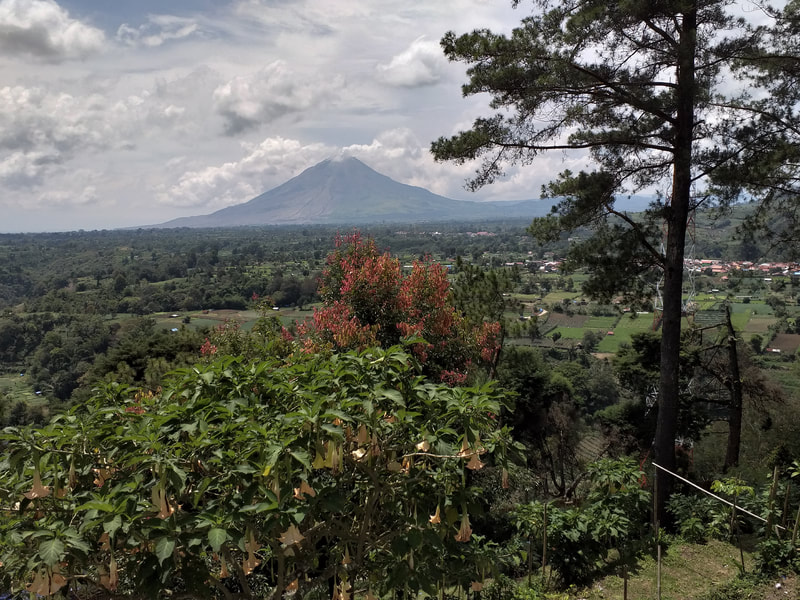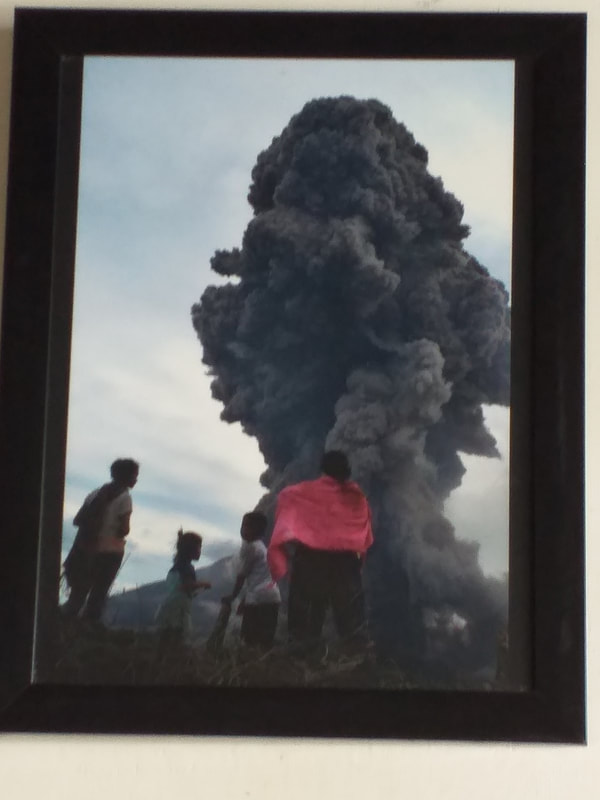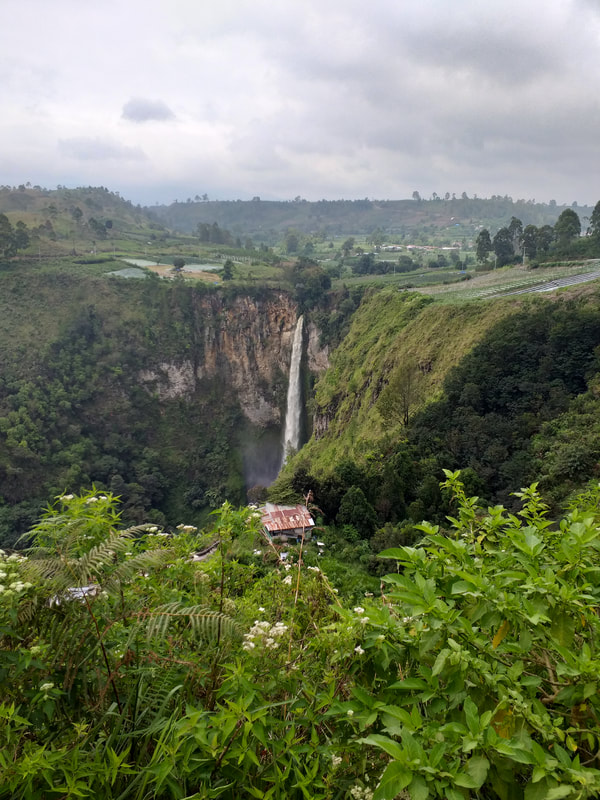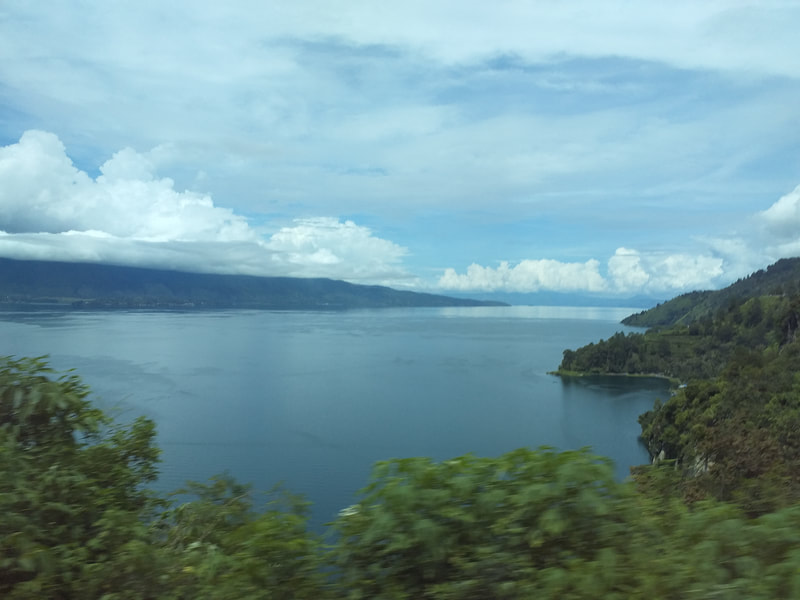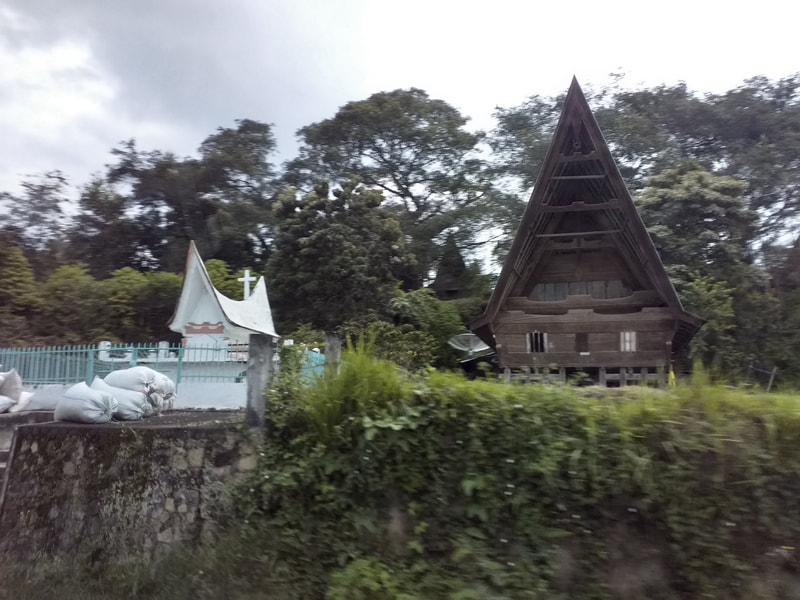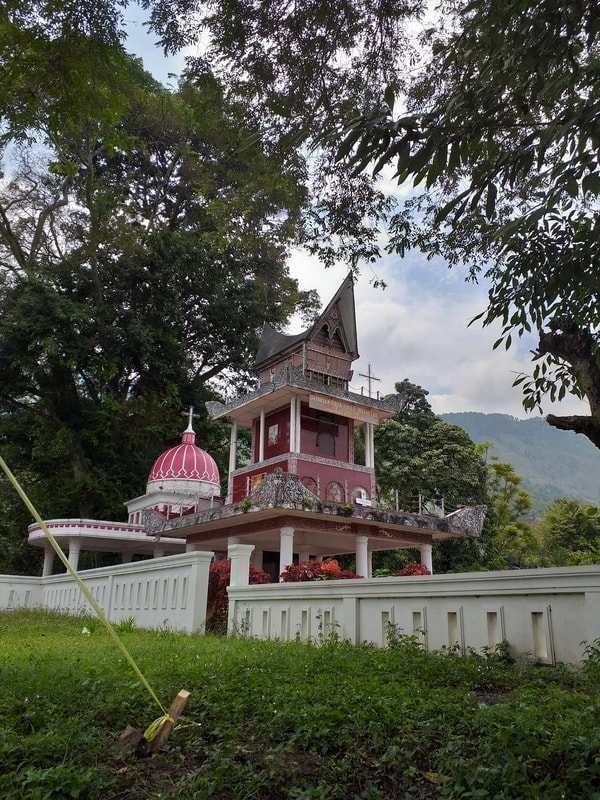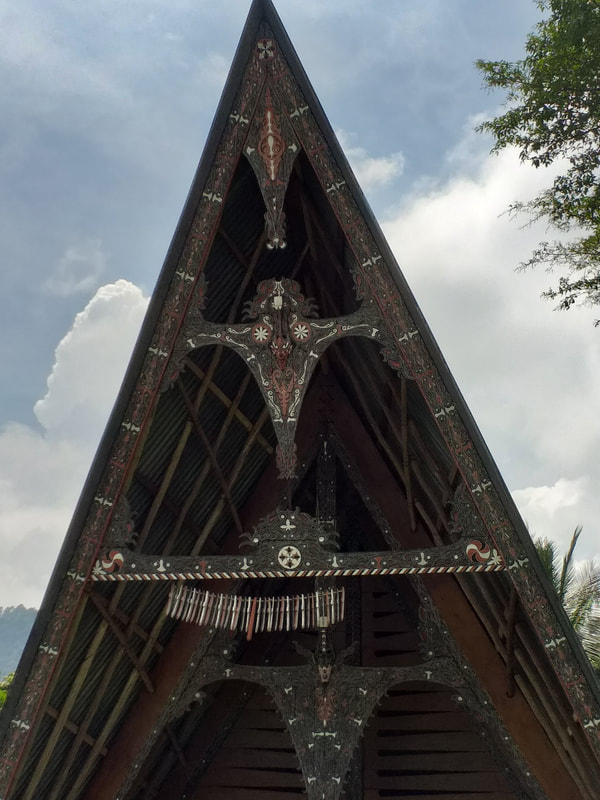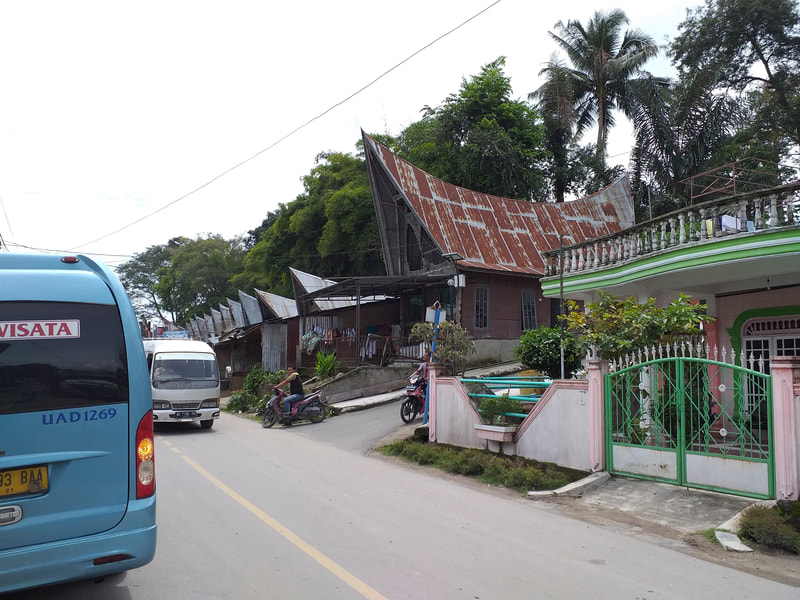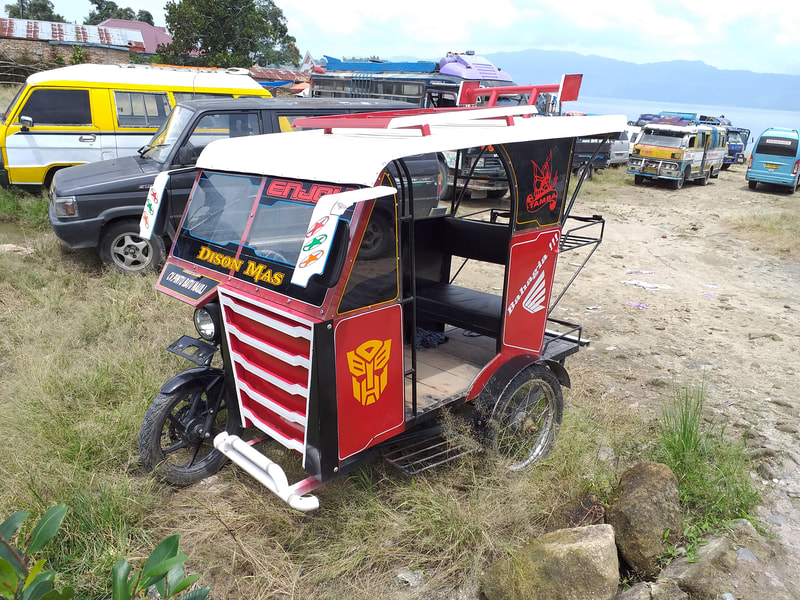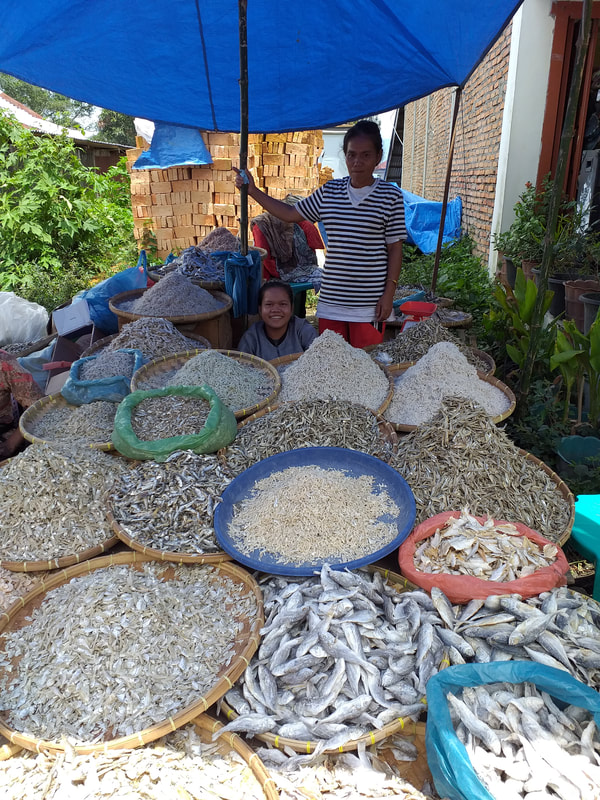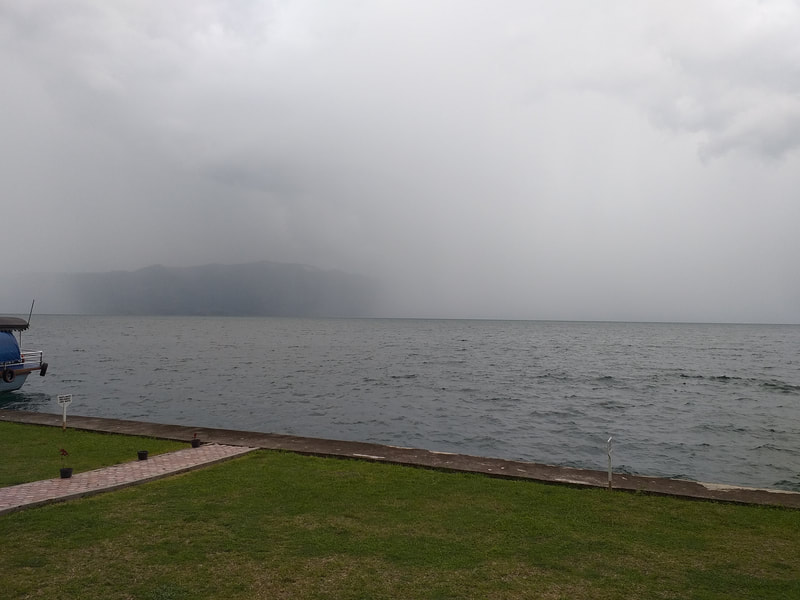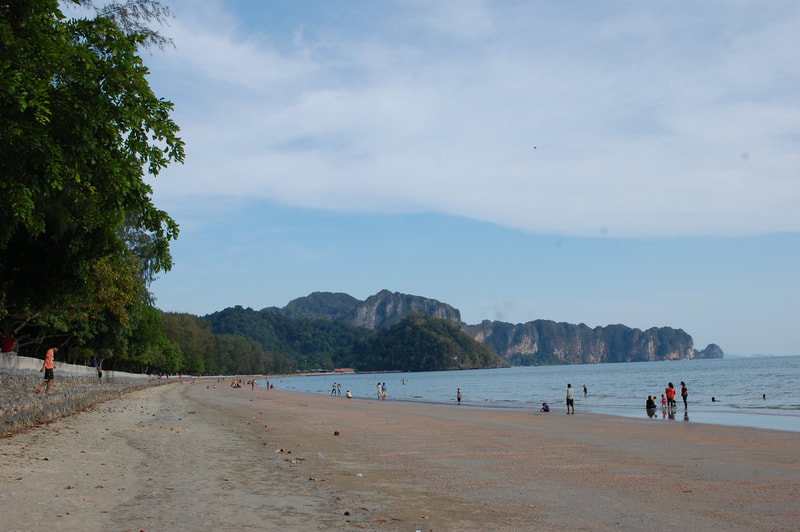|
North Sumatra
It was quite a site to see Medan sprawled from the sea North-eastwards of Sumatra as we landed in Medan International airport. Many rivulets emptying onto the sea, making the sea blue to muddy flats. Beyond that was rice plantation and many large areas of palm oil plantation. It took us more than an hour to get past the heavy traffic of the city to our destination, Deli River Hotel and Resort. It was a beautifully manicured rolling land with thick foliage close by. Tall beetle nut trees with other palm trees against the cloudy evening sky made a pleasing sight as the sun went down. We had only one day set aside for Medan and went out in the morning to see the Maimun Palace, and the great mosque of Medan, the Masjid Raya Mashun. Built by Sultan Ma'mun Al Rashid Perkasa Alamyah in years 1887–1891, the palace was designed by the Dutch architect and covers 2,772 m² with a total of 30 rooms. The Palace has a unique interior design combining elements of Malay cultural heritage, Islamic and Indian architecture, with Spanish and Italian furniture and fittings. Masjid Raya Mashun was built in 1906 and completed in 1909 and is one of the largest mosques in Medan. At first the Al Mashun Mosque was designed by Dutch architect Van Erp who also designed the Maimun Palace, but later the process was done by JA Tingdeman. Some building materials were imported including: marble for decoration imported from Italy, Germany and stained glass from China and chandeliers directly from France. Next day we drove to Berastagi to see the active volcanic sites; mount Sibayak, with its hot springs, and Mount Sinabung. Mount Sinabung erupted after a 400-year-long hiatus in early hours of 29 August 2010. Again in September and November 2013, January, February and October 2014. A pyroclastic flow in May 2016 killed seven people. Thankfully everything was quiet and peaceful on the day of our visit. Our next trip was to lake Toba, driven through the mountains and valleys above the lake, thoroughly a beautiful drive. The lake is located in the middle of the northern part of the Island of Sumatra, with a surface elevation of about 900 metres. The lake is about 100 kilometres long, 30 kilometres wide, and up to 505 metres deep. It is the largest lake in Indonesia and the largest volcanic lake in the world. Lake Toba Caldera is one of the nineteen geoparks in Indonesia. From Berastagi we drove through the picturesque mountains, stopping to visit Sipisopiso water fall, formed by a small underground river of the Karo plateau that hurls itself from a cave in the side of the lake Toba caldera some 120 meters down to lake level. Lake Toba is the site of a massive supervolcanic eruption estimated to have occurred around 75,000 years ago representing a climate-changing event. It is the largest-known explosive eruption on Earth in the last 25 million years. According to the theory, it had global consequences for human populations; it killed most humans living at that time and is believed to have created a population bottleneck in central east Africa and India, which affects the genetic make-up of the human worldwide population to the present. At least four cones, and three craters are visible in the lake. The Tandukbenua cone on the northwestern edge of the caldera has only sparse vegetation, suggesting a young age of several hundred years. Also, the Pusubukit (Hill Center) volcano (1,971 m) above sea level on the south edge of the caldera is solfatarically active. (https://en.wikipedia.org/wiki/Lake_Toba) We stayed one night at Si Tio Tio Resort in Panguguran, the out-skirts of Lake Toba. Next morning we drove over the connecting bridge to Samosir Island located in the lake. Samosir is the largest island within an island, and the fifth largest lake island in the world. The island is the centre of the Batak culture and many of the Toba Batak traditional houses remain on the island. The place is full Batak architectural churches. A visit to the local market was fascinating. Next day we took passenger ferry leaving from Tomok to Tiga Raja harbor, Medan, an hour’s travel. A fascinating and memorable visit to North Sumatra, which we all enjoyed very much. Bird life in North Sumatra As usual we were keen to spot any new birds during our travels. Unfortunately, in spite of plenty of greenery and water around, common birds are a rare site in almost all the places we visited. Is it due to increased pesticide use, as we saw many farmers spraying their rice crops? There were streams flowing and plenty of greenery but no sign of birds as one would expect to see in such areas. In Medan at Deli River Resort, a sub urban part of Medan, where there were plenty of trees and vegetation and a torrent stream flowed nearby, but little sign of any bird. We were only able to observe one shikra, a few glossy starlings and some doves. At lake Toba we were a bit luckier and saw a couple of Sumatran Green-pigeons, Little Green Pigeon, plenty of Black-headed Bulbuls and both zebra and spotted doves. A pair of Pacific Golden Plovers were spotted on the lake shore. In Samosir, at Rogata Beach Hotel, the proprietor had advised us to visit the Bukit Doa Getsemane Sanggam, Ambarita, Samosir, just across the road from the resort, with a statue of Jesus looking down the valley, and very well-maintained gardens and plenty of tall trees and greenery. We were hopeful to see plenty of birds but our hope was shattered and only a few birds could be spotted. We spotted an Ashy Drongo, a Golden Oriole, a Pied Kingfisher and a couple of Barn Swallows on the Jesus statue. Around the hotel and in Samosir, lake Toba, there were Olive-backed Sunbirds, doves, and plenty of black headed bulbuls. It was heartening to see plenty of egrets flying over the lake and at close quarters a Little Egret in breeding plumage. Surprisingly, as we were waiting to take off in the plane at Medan airport we saw a flock of around 15-20 Open Bill Storks in a drainage canal next to the runway, totally oblivious of the presence and noise of planes landing and taking off. |
